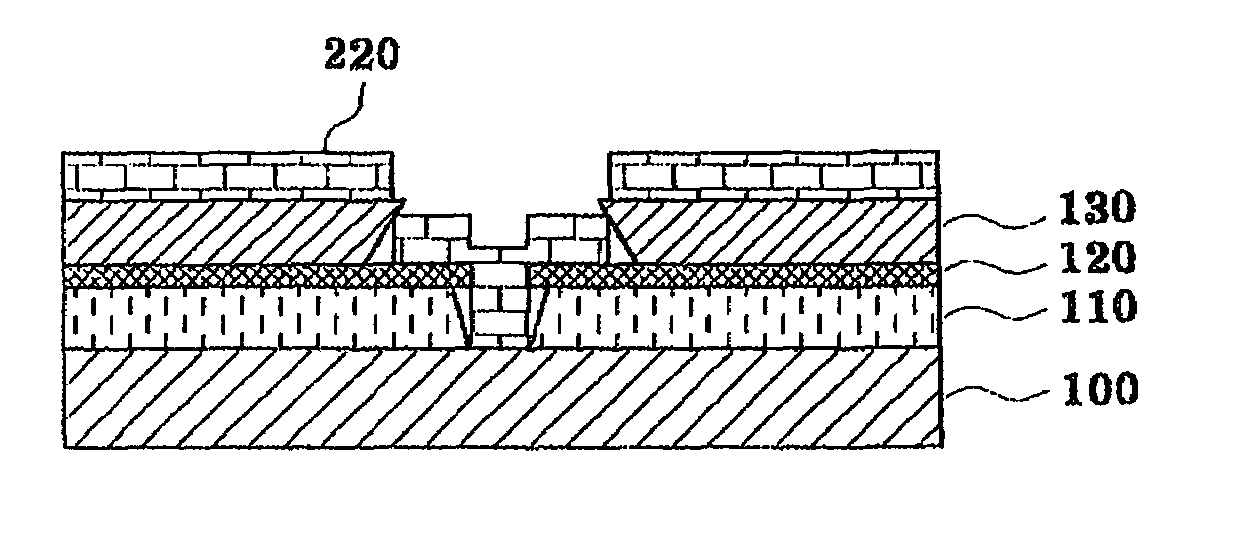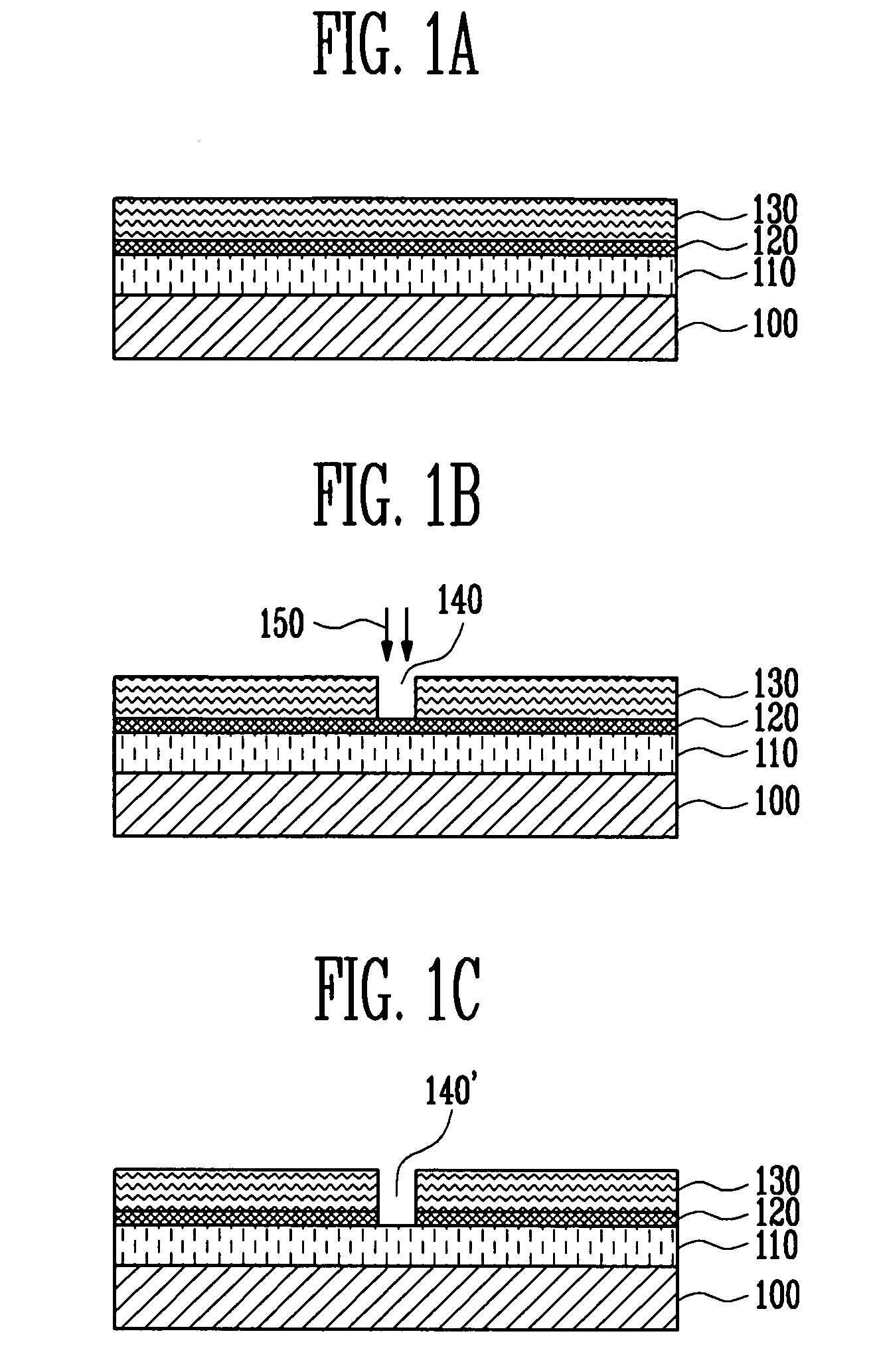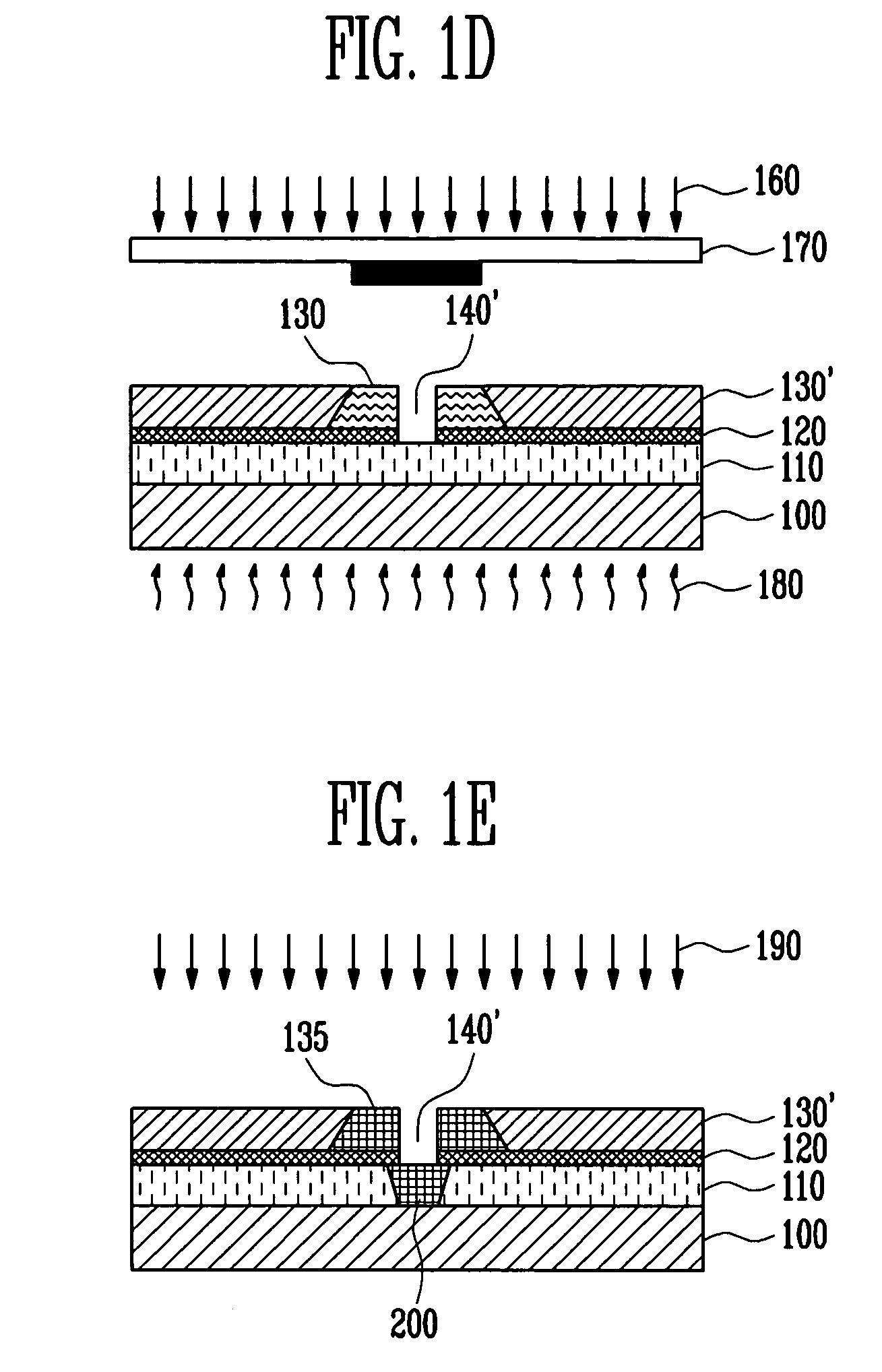Method of fabricating T-type gate
a gate and t-type technology, applied in the direction of basic electric elements, electrical equipment, semiconductor devices, etc., can solve the problems of many steps, difficult to adapt the photoresist layer on the insulating layer rather than the metal layer, and the device cannot be easily manufactured, so as to reduce the manufacturing cost and enhance the yield
- Summary
- Abstract
- Description
- Claims
- Application Information
AI Technical Summary
Benefits of technology
Problems solved by technology
Method used
Image
Examples
Embodiment Construction
[0016]The present invention will now be described more fully hereinafter with reference to the accompanying drawings, in which exemplary embodiments of the invention are shown. This invention may, however, be embodied in different forms and should not be construed as limited to the embodiments set forth herein. Rather, these embodiments are provided so that this disclosure is thorough and complete and fully conveys the scope of the invention to those skilled in the art.
[0017]FIGS. 1A to 1H are cross-sectional views illustrating a method of fabricating a T-type gate in accordance with an embodiment of the present invention.
[0018]Referring to FIG. 1A, a lower photoresist layer 110 (for example, PFi-38A), which is sensitive to UV light, is formed to a predetermined thickness (for example, about 400 nm) on a compound wafer substrate 100, a blocking layer 120 (for example, made of Al or Ti) having a predetermined thickness (for example, about 20 nm) is deposited on the lower photoresist ...
PUM
 Login to View More
Login to View More Abstract
Description
Claims
Application Information
 Login to View More
Login to View More - R&D
- Intellectual Property
- Life Sciences
- Materials
- Tech Scout
- Unparalleled Data Quality
- Higher Quality Content
- 60% Fewer Hallucinations
Browse by: Latest US Patents, China's latest patents, Technical Efficacy Thesaurus, Application Domain, Technology Topic, Popular Technical Reports.
© 2025 PatSnap. All rights reserved.Legal|Privacy policy|Modern Slavery Act Transparency Statement|Sitemap|About US| Contact US: help@patsnap.com



